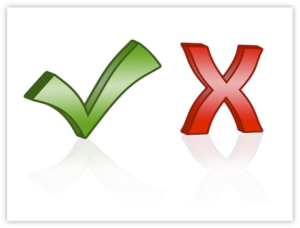
Part #1 – Flawless Compliance
Human Resources professionals agree, automating the I-9 and E-Verify process is an important step for any organization to take if they want to reduce their compliance risk and gain efficiencies. While evaluating and purchasing technologies is a common practice for HR organizations, selecting a tool that will best automate a process with stringent government regulations and potential fines may be considered a daunting task. This is especially true when many providers make similar claims and products seem to include many of the same features.
This is the first of a three part series designed to help you unravel the most important criteria for consideration. This post is focused on flawless compliance – or the degree to which you can depend on the solution to ensure your organization’s risk has been eliminated. Does the product’s workflow systematically eliminate the natural faults of the paper I-9 process? Is the system’s compliance logic sound enough reduce your risk? Does the user experience enable non-experts in your organization to deliver consistent results?
Document errors are the single biggest cause of non-compliance – 55%+ of errors on paper I-9s have to do with documents. Here are some questions to ask to ensure the system is designed to eliminate these issues.
- When filling out Section 2, can the manager choose an employment authorization document that is not applicable to the employee’s citizenship status in Section 1?
- Does the system allow Section 2 to be signed with an invalid combination of documents?
- When completing Section 3, does the system present any document choices that are not relevant to Section 3?
- Before the hiring manager makes their document choice, can they see a sample image of the document?
- Does the solution provide an image showing where to find the document number?
- Does the system perform validation on the document number, issuing authority, and expiration date entered by the user?
- Does the system have well designed workflows that support all nine (9) of the complex requirements described in the USCIS Handbook for Employers (M-274) for recording the additional document information that certain foreign national employee can present in order to prove their work authorization?
16% of compliance errors have to with late signatures. Here are some questions to ask to determine if the system facilitates a time-sensitive workflow:
- Is there an intuitive dashboard that helps users quickly and easily determine the status of their tasks to ensure on-time completion?
- Is the dashboard configurable by user types and able to show only the records and functions relevant to the user? Does it display at to-do list for that user?
- Does the solution allow alerts to be set up so users can be notified of certain events? What level of configuration is available to set these up?
Our I-9 Evaluation Guide is jam-packed with 15 pages of questions like these to help you determine the best choice to automate your process. Download it today or contact us for more info.